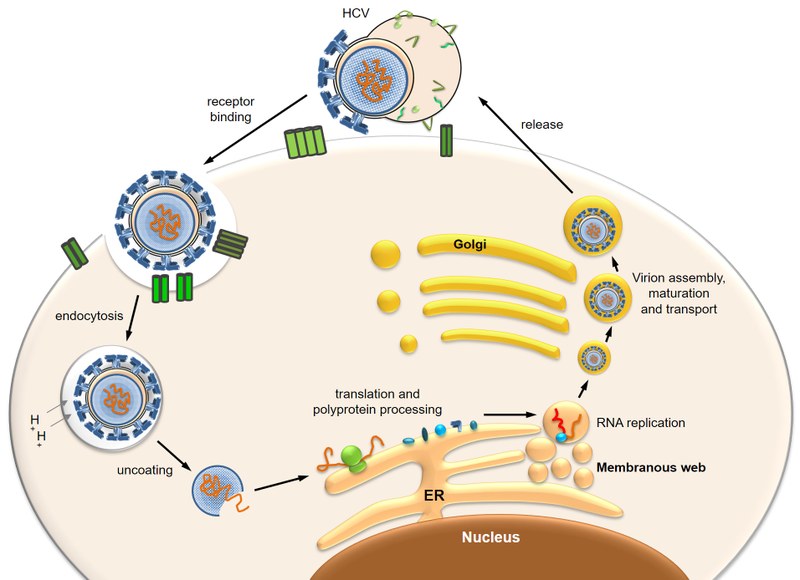AG Niepmann

06/2021 copyright: private

11/2021 copyright: private

02/2022 copyright: private
Gene regulation of Hepatitis C virus and Picornaviruses
Hepatitis C Virus (HCV) propagates preferentially in the liver. After infection of a cell, HCV and other single-stranded RNA viruses like Poliovirus, Rhinoviruses or Hepatitis A Virus use their positive strand genomic RNA directly for translation in the cytosol.

copyright: private
The cis-elements for replication of the HCV RNA genome that direct the initiation of negative and positive strand RNA synthesis largely reside in the 5´- and 3´-untranslated regions (UTRs) flanking the viral polyprotein open reading frame (ORF). For the preferential translation of their own viral proteins, these viruses bypass the normal route of cap-dependent translation in the eukaryotic cell by a special mechanism. The initiation of translation of viral proteins is directed by a cis-acting region of the viral RNA, the internal ribosome entry site (IRES).

copyright: private
Also other viral RNAs recruit cellular RNA-binding proteins. These proteins are used by the viral RNAs usually in so-called "moonlighting" functions which are different from the canonical use of the proteins in the cell. For example, the genomic RNA of Poliovirus binds the cellular Glycyl-tRNA Synthetase (GARS), which in its canonical function charges its cognate tRNA with the amino acid glycine. The binding of GARS to a tRNA-like RNA element in the Poliovirus RNA, however, stimulates the translation of the Poliovirus RNA. We are investigating the nature and function of such cis-signals also in the genomic RNAs of other Picornaviruses.

copyright: private
The list of publication, please, find here: PubMed
